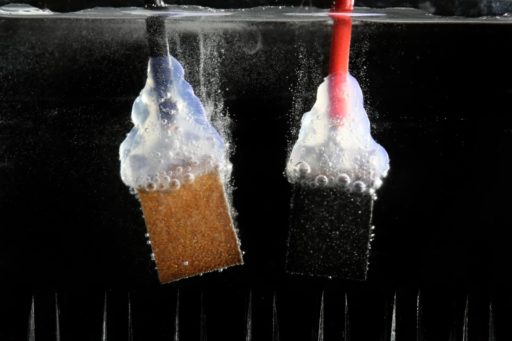Two young PhD candidates, Leslie Dewan and Mark Massie, in nuclear engineering at MIT are earnestly trying to transform nuclear waste into electric power. They are so determined to the cause that they had even started a company, Transatomic Power, in 2011 with a mission to transform the nuclear power industry.
Transatomic Power is a nuclear reactor design company. A trio consisting of Russ Wilcox, Leslie Dewan and Mark Massie co-founded the company in 2011. They have developed a 200 MWe molten salt reactor, called Waste-Annihilating Molten Salt Reactor (in short, WAMSR). WAMSR can be powered by nuclear waste because it uses radically different technology from conventional nuclear plants. Instead of using solid fuel pins, the two MIT scientists dissolved the nuclear waste into a molten salt and and therefore it could capture more of its energy. In other words, this 200 MWe molten salt reactor WAMSR is capable of converting high-level nuclear waste into electric power . The WAMSR is capable of converting high-level nuclear waste into $7.1 trillion worth of electricity, each year.
Interestingly, WAMSR is not a new technology; rather it’s an upgraded version of an old reactor technology, Liquid Fluoride Thorium Reactor (in short, LFTR). The LFTR needed both the Uranium and Thorium to work on. But WAMSR can run on either Uranium or Thorium. WAMSR is designed in such a way that, it can consume spent fuel from conventional light-water reactors. The WAMSR uses Uranium isotope U-235 to transform nuclear power.
Russ Wilcox, the CEO and co-founder of Transatomic said, “Nuclear power is in a cul de sac. The nuclear industry knows it’s in trouble, it’s not quite sure what to do, and it’s just trying to survive for the moment. It’s a fabulous time to do a leapfrog move.”
Transatomic’s has plans to build a prototype reactor in upcoming 5 years and commercialize the technology within 15 years. According to their plans, by around 2030, the WAMSR will be found online. The interesting thing is, the company is not interested to build and operate any nuclear power plants; rather it would prefer to license its reactor technology.
The 200 MWe molten salt reactor can be manufactured economically at a central location. It can easily transported by rail to the reactor site. The company believe that at full deployment, their developed reactors can use existing stockpiles of nuclear waste to satisfy the world’s electricity needs by 2083.
Source : Transatomic Power
Special Thanks To : Nuclearinfo, Forbes
[ttjad keyword=”solar-device”]



